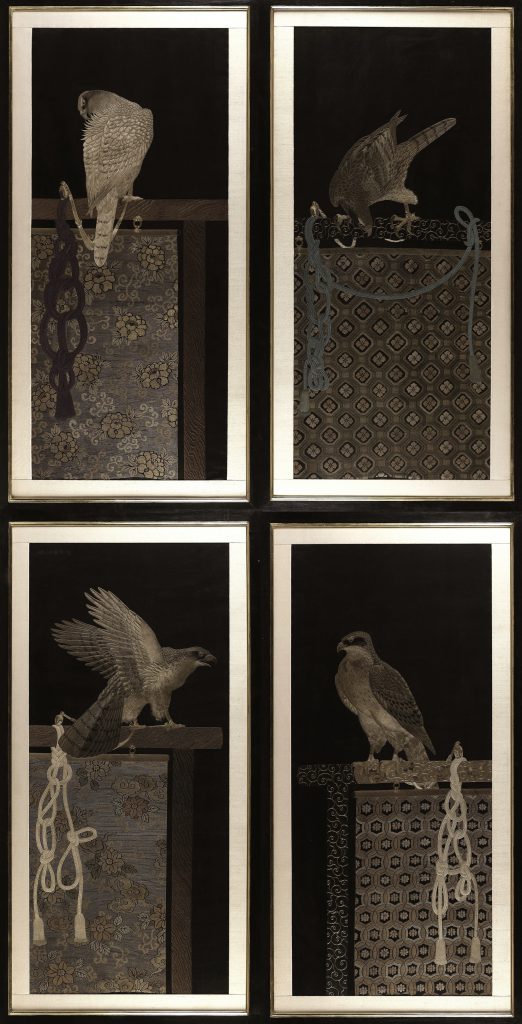



Title: Set of Four Panels
Date: circa 1890
Location: Japan
Materials: embroidered silk, wood frame
Dimensions: 129 x 67 cm (each panel)
Accession Number: MISC 65
Other Notes:
In Japanese Art, imagery from the natural world is often used in the short poetry form known as haiku, as are kigo (seasonal references). This has sometimes led to the confusion that all haiku are ‘nature’ poems. It is true to say that certain motifs carry with them a very strong sense of season; for example, blossom stands for spring and snow for winter, with all the connotation of those seasons. Kigo also represent, on their own or in combination, a feeling or a concept: for example, falling autumn leaves are symbols of grief, while the chrysanthemum denotes the ninth month and the imperial family. Winter kigo include obvious references of snow and ice, but also hares, owls, wild ducks, plovers, falcons and hawks, such as the hawks embroidered on the present panels.
Bibliography:
G. Irvine (ed.), Japonism and the Rise of the Modern Art Movement: The Arts of the Miji Period: The Khalili Collection, Thames and Hudson, New York, 2013, cat. 44, pp. 210–3.
Zoom
Close

Create your own collection of artworks that you can print or save as a PDF. Please enter you email to enable feature.
Small Flask | JLY 1075
Has been added to your collection.
TIP:
You can now access and view your collection from the main menu at any time.